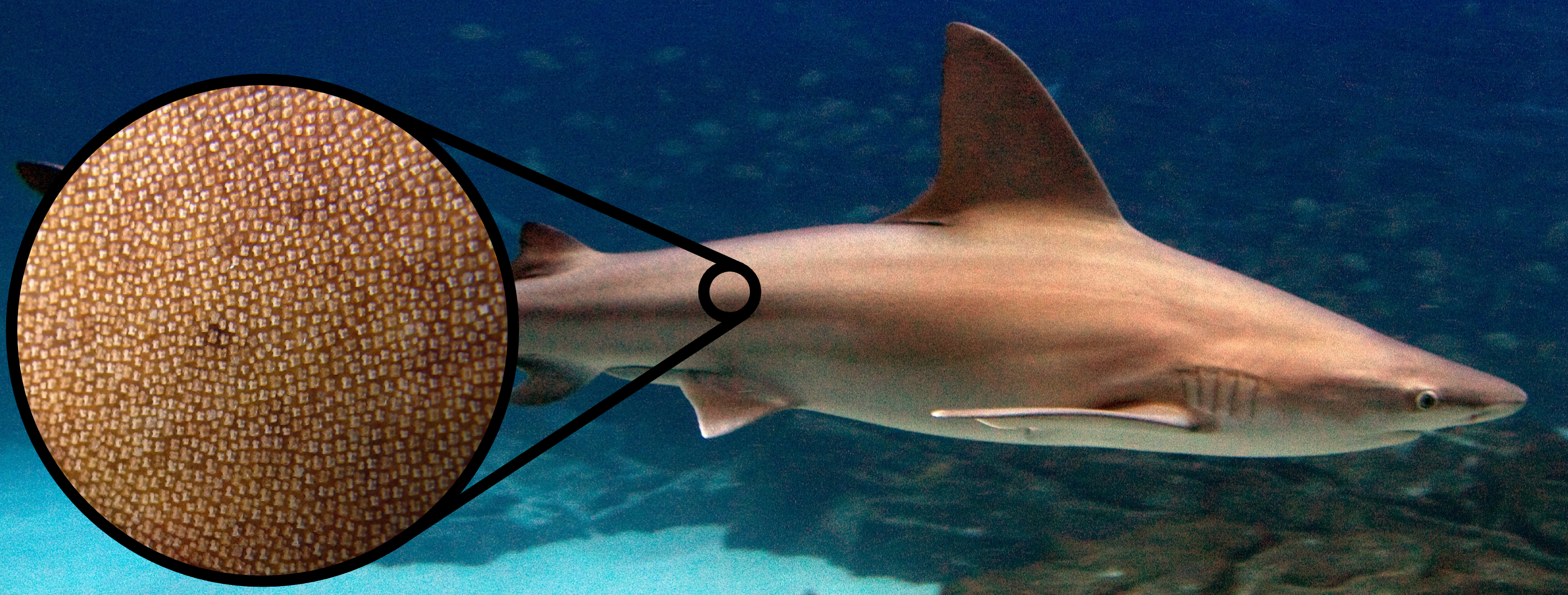The shark skin effect is drag reduction in fluid flow due to a certain design of surface microstructure, namely, due to riblets mimicking shark scale. When a shark swims in water, a special design of riblets on its skin results in the reduction of turbulence and energy loss. Engineers working in biomimetics have suggested to mimic the riblet structure and produce “shark-skin effect” coatings for ship and submarine hulls, swimsuits and pipes. The effect is closely related to the roughness-induced superhydrophobicity, self-cleaning, and anti-fouling.

(Image from the Web)
Together with the colleague Prof. Vitaliy Rayz (now at Purdue University) and with PhD student Nazanin Maani, we have suggested to apply the same effect to the study of blood flow leading to the new area of “haemophobicity” to control blood stagnation and clotting in cardiovascular applications such as stents, catheters, blood filters and similar devices. Some preliminary computational results have been published at:
We need more funding for this pioneering and potentially transformative research. If you have funds available to support this research direction, please let us know!

(Image from the Web)